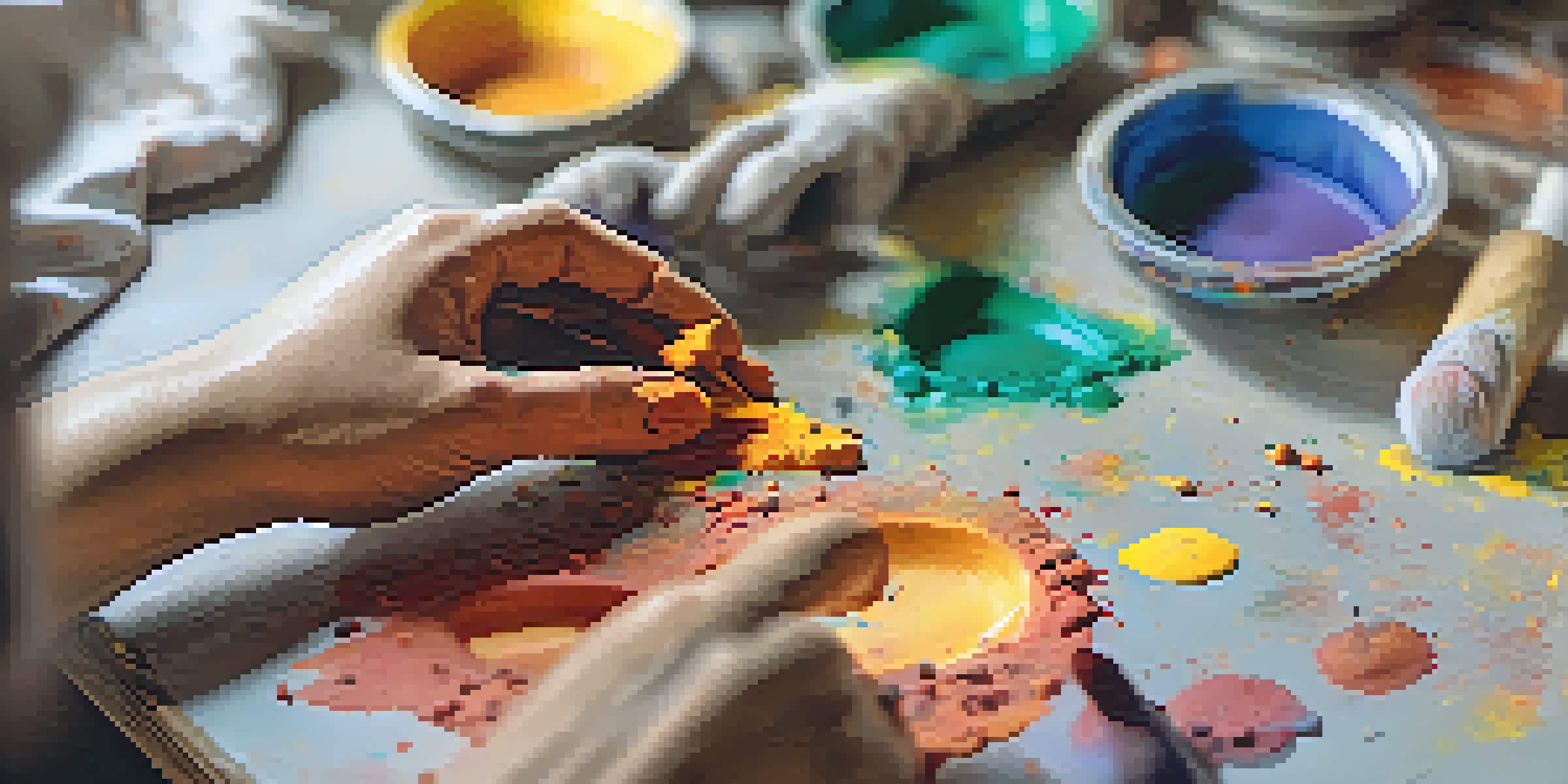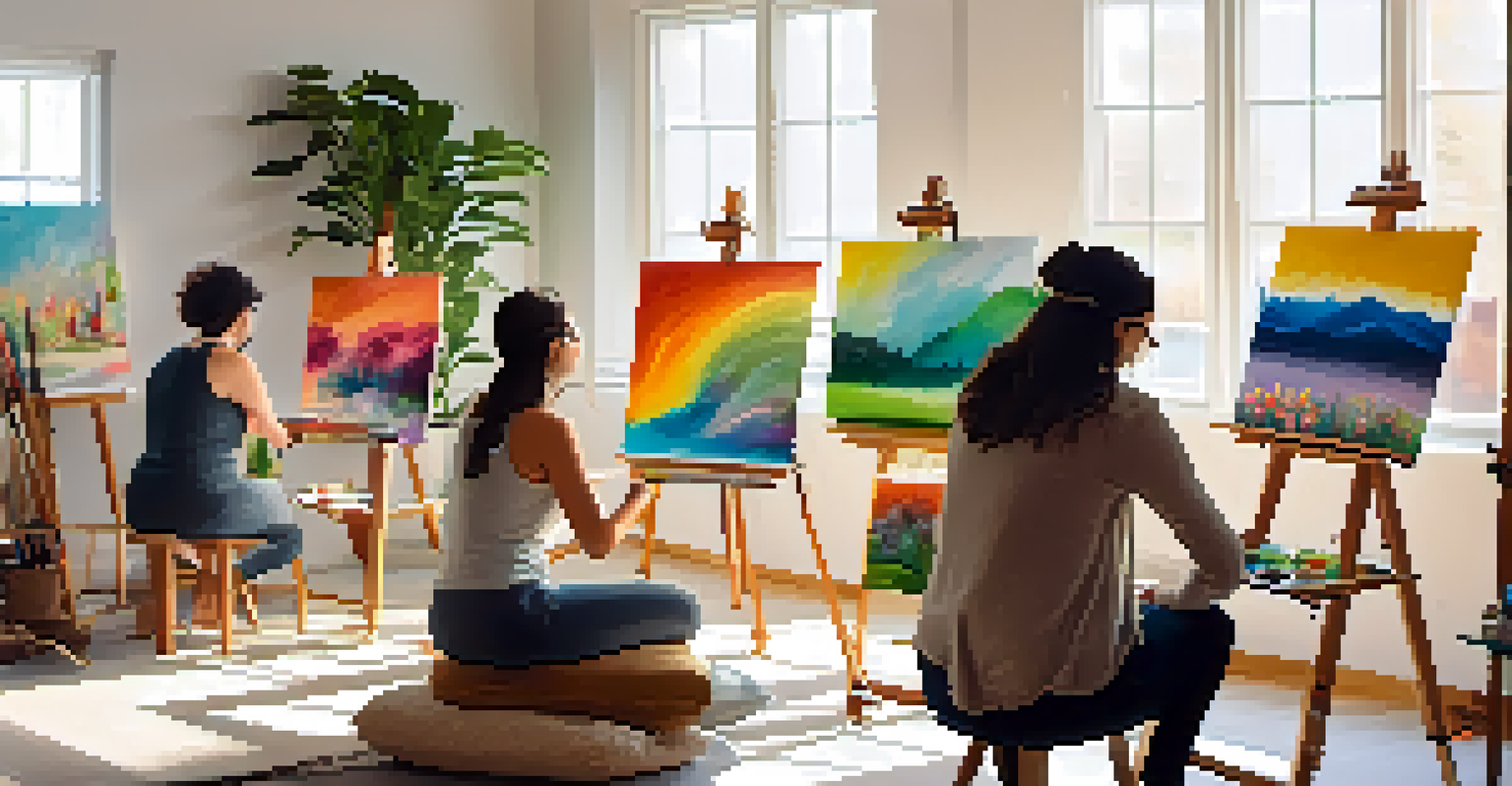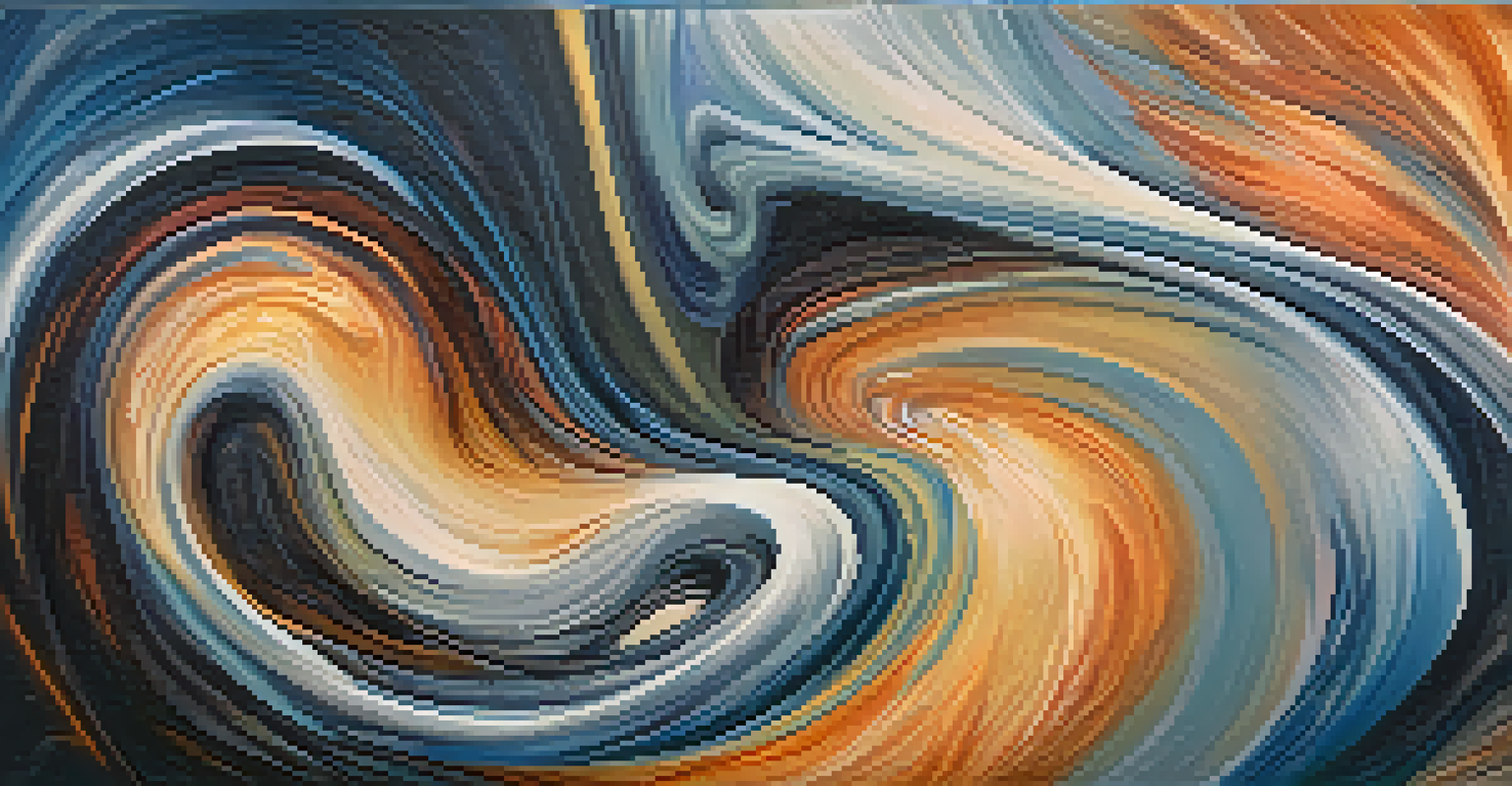The Role of Marijuana in Enhancing Art Therapy for Anxiety

Understanding Anxiety and Its Impact on Creativity
Anxiety can be a heavy burden, often stifling creativity and expression. Many individuals struggle to articulate their feelings, leading to frustration and a sense of isolation. Art therapy provides a unique avenue for self-exploration, allowing people to communicate through art rather than words.
Creativity takes courage.
When anxiety grips someone, it can feel like a thick fog, obscuring their thoughts and ideas. This is where art therapy comes in, acting as a lighthouse guiding individuals to express their inner turmoil creatively. By engaging with art, clients can unlock emotions they might find too daunting to voice.
As we consider the intersection of anxiety and creativity, it becomes clear that finding effective coping mechanisms is crucial. Art therapy not only encourages self-expression but also fosters a sense of community and support, which is essential for those battling anxiety.
The Basics of Art Therapy: A Creative Outlet for Healing
Art therapy is a therapeutic practice that uses creative processes to improve mental well-being. Trained therapists guide individuals through various artistic mediums, allowing for a safe space to process emotions. The beauty of this approach is that it doesn't require any prior artistic skill; it's about the journey, not the destination.

Through activities like painting, drawing, or sculpting, participants can explore their feelings without the pressure of traditional communication. This form of therapy encourages mindfulness, helping clients focus on the present moment while engaging in creative expression. It can be especially beneficial for those who feel overwhelmed by anxiety.
Art Therapy Eases Anxiety
Art therapy provides a creative outlet for individuals to express their emotions, helping to alleviate anxiety and foster self-discovery.
Incorporating art into therapy allows individuals to visualize their thoughts and feelings, providing a tangible representation of their internal struggles. This process can facilitate deeper understanding and healing, making it a vital tool in anxiety management.
Introducing Marijuana: A Natural Ally for Anxiety Relief
Marijuana, particularly its compounds like CBD and THC, has gained attention for its potential to alleviate anxiety. Many users report feeling more relaxed and open when using marijuana, which can enhance the therapeutic process. This natural approach to anxiety relief has sparked interest in its integration into various therapeutic practices.
Art is the most beautiful of all lies.
The calming effects of marijuana can help individuals lower their defenses, making them more receptive to the creative process. When anxiety is diminished, participants may find it easier to express themselves through art, leading to more profound insights and emotional breakthroughs. This synergy can create a powerful dynamic in art therapy sessions.
However, it's essential to approach marijuana use with caution and awareness. Not everyone reacts the same way to cannabis, and some may experience increased anxiety. Therefore, it's crucial to tailor its use to each individual's needs and preferences for the best therapeutic outcomes.
Combining Marijuana with Art Therapy: A Holistic Approach
When art therapy and marijuana are combined, they can create a holistic healing experience. The calming effects of marijuana can help clients feel more at ease, allowing them to delve deeper into their emotions during art sessions. This combination might lead to a more authentic artistic expression and greater emotional clarity.
The relaxed state induced by marijuana can also enhance the sensory experience of creating art. Colors may seem more vibrant, and textures more pronounced, which can inspire creativity. This heightened awareness can help individuals connect with their art on a deeper level, fostering a sense of liberation from their anxieties.
Marijuana Enhances Creativity
The calming effects of marijuana can lower defenses, making it easier for individuals to engage in the creative process during art therapy.
While the integration of marijuana into art therapy shows promise, it should always be approached thoughtfully. Therapists must consider each client's unique circumstances and preferences to create a safe and nurturing environment for self-expression.
Success Stories: Real-Life Experiences with Art Therapy
Many individuals have shared transformative experiences through the combination of marijuana and art therapy. For instance, a young woman who struggled with anxiety found that after using cannabis, she could immerse herself in painting without fear of judgment. This newfound freedom allowed her to create pieces that expressed her deepest emotions, leading to significant personal growth.
Another client discovered that combining marijuana with sculpting helped her articulate feelings she had long suppressed. The tactile nature of clay, paired with the calming effects of cannabis, enabled her to visualize her anxiety and reshape it into something beautiful. These stories highlight how this blend can facilitate healing and self-discovery.
Such success stories underscore the potential of integrating marijuana into art therapy. They serve as a reminder that healing is a deeply personal journey, and finding the right tools can make all the difference.
Navigating the Legal Landscape of Marijuana for Therapy
As interest in marijuana for therapeutic purposes grows, understanding the legal landscape is crucial. Laws surrounding cannabis use vary widely by region, and it's essential for both therapists and clients to be informed. Ensuring compliance with local regulations can help create a safe and secure therapeutic environment.
In areas where marijuana is legal for medicinal use, obtaining the necessary licenses and recommendations can empower clients to explore this option safely. Therapists should stay updated on these regulations to provide accurate guidance and support to their clients. This knowledge fosters trust and ensures a professional approach to therapy.
Navigating Legalities is Crucial
Understanding the legal landscape of marijuana use is essential for both therapists and clients to ensure safe and effective therapeutic practices.
Navigating the legalities of marijuana use in therapy also involves understanding its potential risks and benefits. Open communication between therapists and clients about these aspects is vital for informed decision-making and responsible use.
The Future of Art Therapy and Marijuana Integration
The future of art therapy may very well include a broader acceptance of marijuana as a therapeutic tool. As more research emerges highlighting its potential benefits, practitioners may begin to adopt it into their practices more widely. This shift could lead to a more holistic approach to mental health treatment.
Innovative programs that incorporate marijuana into art therapy are already beginning to emerge, showcasing promising results. These programs aim to create supportive environments where individuals can explore their creativity while experiencing the calming effects of cannabis. This could pave the way for new therapeutic models that prioritize the individual's unique needs.

As we move forward, the integration of marijuana in art therapy may inspire a reevaluation of traditional mental health treatment methods. With ongoing research and open dialogue, we can hope for a future where creative expression and natural healing coexist harmoniously.